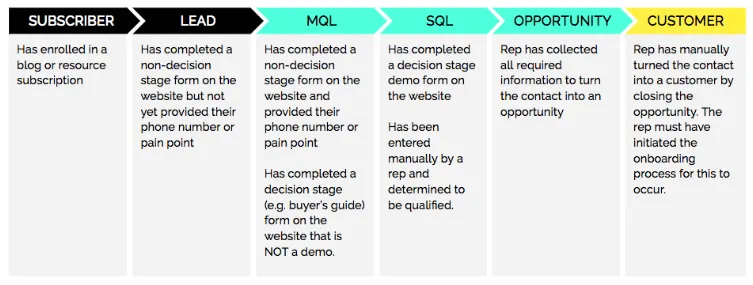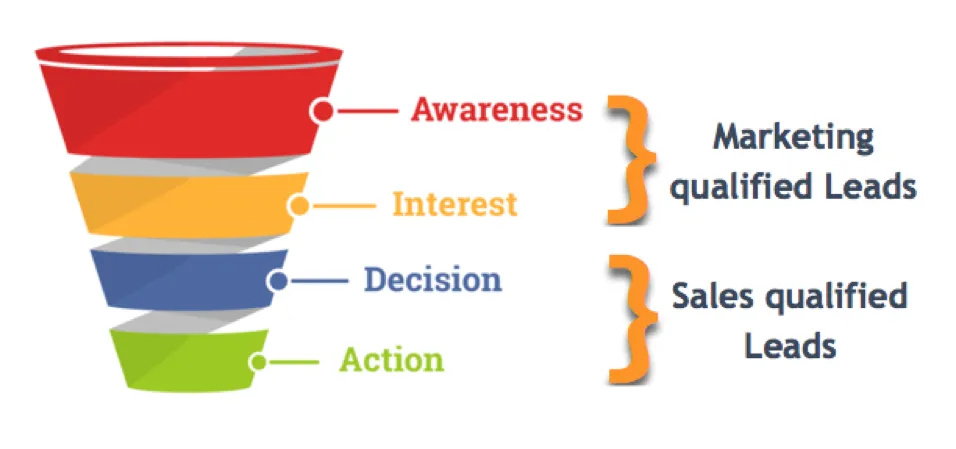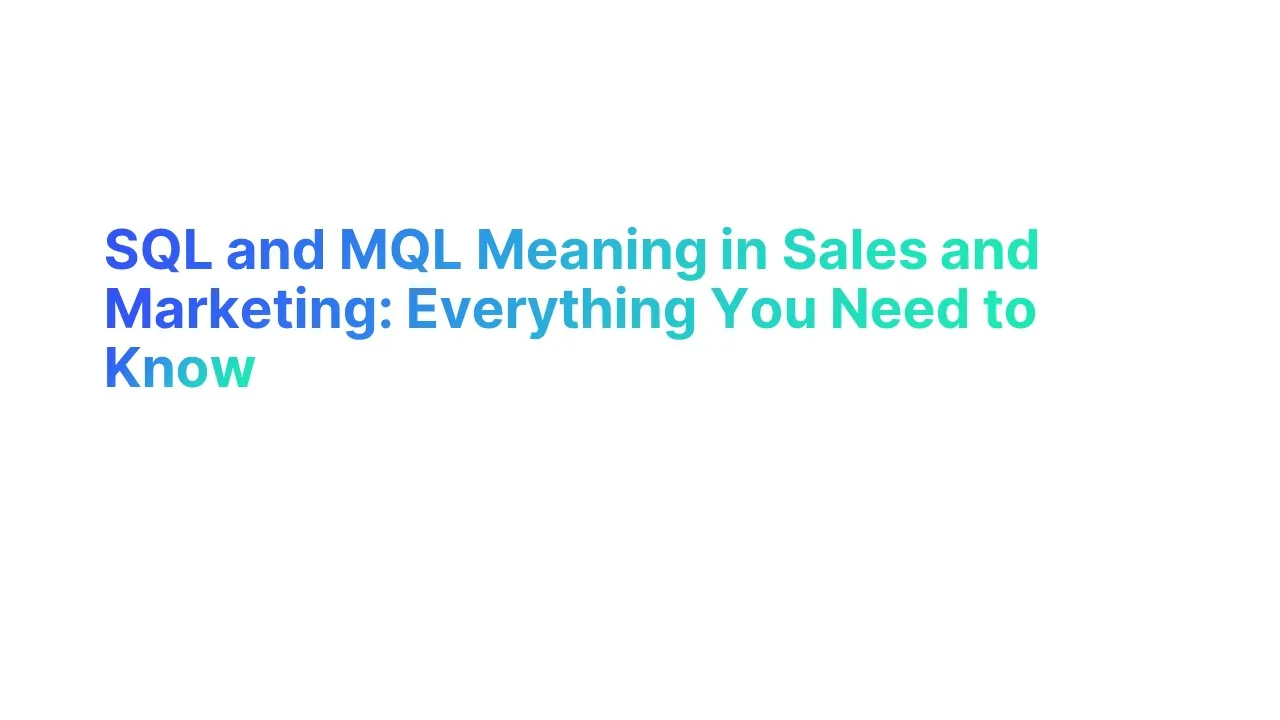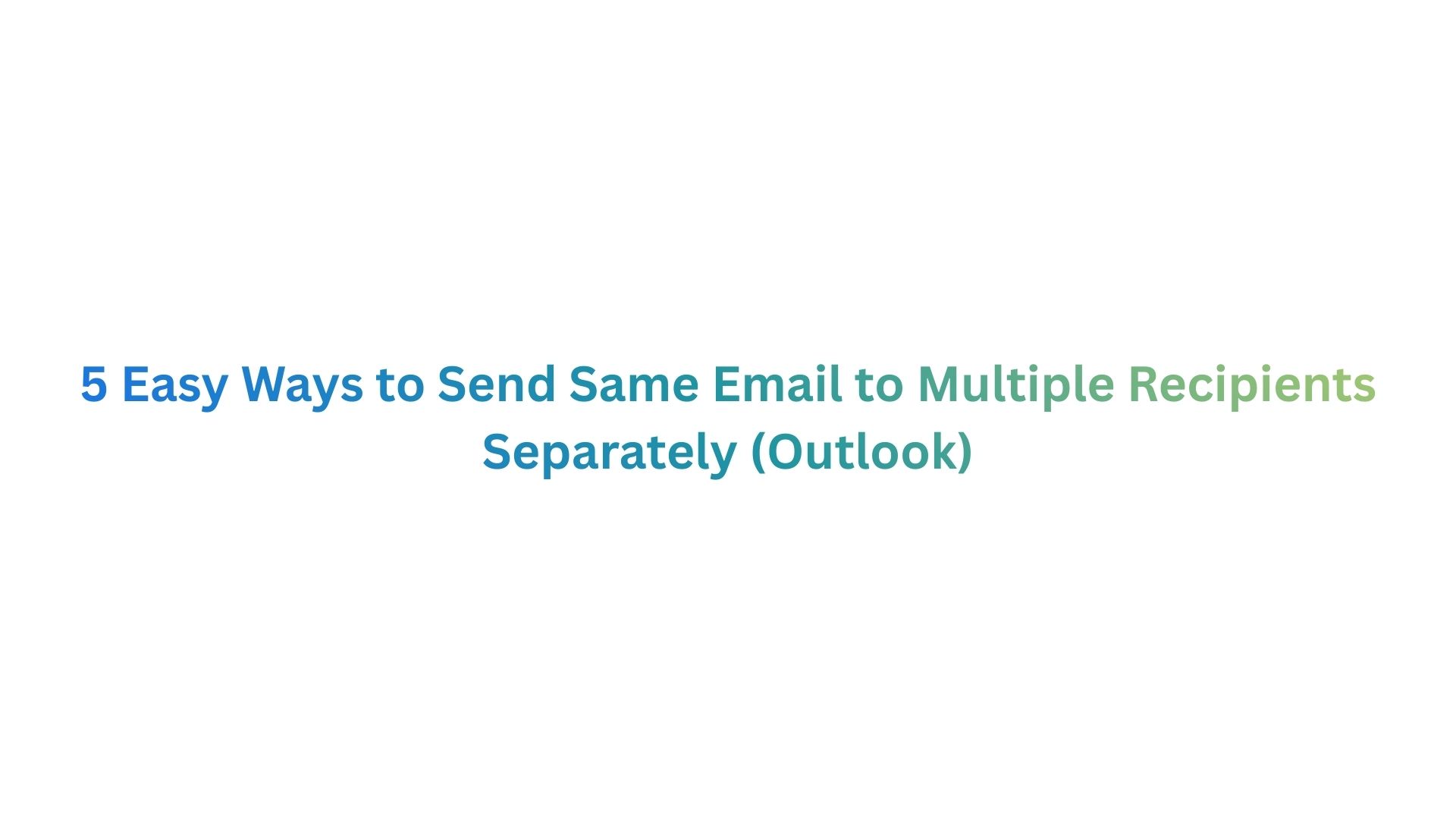What is a Marketing Qualified Lead?

A Marketing Qualified Lead (MQL) is a prospective customer that has shown enough interest in a company's products or services to move beyond the general engagement stage. This type of lead is not just casually browsing; they have engaged in ways that signify a potential readiness to transition towards a purchase. MQLs are crucial for efficient resource allocation in marketing efforts.
Identifying MQLs helps marketing teams prioritize resources and tailor follow-up communications to nurture these leads through the sales funnel, effectively increasing the chances of conversion.
What Exactly Do MQLs Do in the Sales Process?
1. Nurturing to SQL Transition
- MQLs are nurtured with the goal of turning them into Sales Qualified Leads (SQLs). This involves targeted content and interactions that are designed to increase their interest and move them closer to a buying decision.
- Nurturing leads increases the chances of conversions because it ensures that leads are warm and educated about the product before they speak to sales. For example, nurtured leads have shown to make purchases that are 47% larger than non-nurtured leads.
2. Segmentation and Personalized Communication:
- MQLs receive communications based on their specific interactions or engagement level. This can include emails tailored to their interests, invitations to private webinars, or exclusive offers.
- Personalized marketing increases the relevance of the content to the recipient, which can increase engagement rates by up to 74%.
3. Feedback Loop Between Sales and Marketing
- The information gathered from the interactions with MQLs is often fed back to both marketing and sales teams to refine ongoing strategies and ensure that the leads being passed to sales meet the necessary criteria of readiness and fit.
- Sales teams provide feedback on the quality of the MQLs received, which helps marketing to adjust scoring criteria and nurturing tactics to improve the quality and readiness of future MQLs.

Examples of MQLs
Here are some examples of what might qualify someone as an MQL:
- Downloading Content: An individual who downloads whitepapers, eBooks, or other educational content from a company's website could be considered an MQL. This action demonstrates a deeper interest in the company’s offerings or industry knowledge.
- High Engagement Levels: Engagement through repeated visits to the website, spending significant time on key pages, or interacting with online tools can indicate an increased interest, marking them as a potential MQL.
- Event Registration: Registering for webinars, workshops, or industry events hosted by the company suggests a commitment to learning more about the company’s products or industry insights.
- Email Marketing Responses: Actions such as opening multiple emails, clicking through on email content, or responding to calls-to-action in email campaigns are strong indicators of MQL status.
- Completing Forms: When a visitor fills out contact forms with more detailed information than just name and email, such as company size, role, or specific interests, it helps in qualifying them as an MQL.
How to Identify Marketing-Qualified Leads

The key to identifying MQLs effectively involves understanding the nuances of lead interactions and using strategic criteria to qualify leads based on their likelihood to become customers.
Here's a comprehensive approach to identifying MQLs:
Establishing Criteria for MQLs
1. Behavioral Tracking
- Monitor specific behaviors that indicate a lead’s interest in your products or services. This includes actions like downloading whitepapers, signing up for webinars, or spending extended time on critical webpages.
- These actions show a higher level of engagement compared to just browsing, suggesting a deeper interest in your offerings.
- Use marketing automation tools to track these interactions and score them based on their significance towards buying intent.
2. Lead Scoring Systems
- Develop a lead scoring model that assigns points for various actions considered indicative of buying interest. This can include email engagement, content downloads, and social media interactions.
- A scoring system helps quantify the engagement level of each lead, making it easier to differentiate between casual visitors and those more likely to convert into customers.
- Set thresholds that a lead must exceed to be classified as an MQL. For example, a lead might need a score of 50 points, with points awarded for activities like attending a webinar (10 points) or downloading a detailed guide (20 points).
Integration of Marketing Tools
3. Use of Marketing Automation and CRM
- Implement marketing automation software integrated with Customer Relationship Management (CRM) systems to seamlessly track and manage lead data.
- This integration allows for the automatic update and scoring of lead activities across multiple channels, ensuring no potential MQL is overlooked.
- Automation tools can trigger alerts when a lead's score crosses the MQL threshold, prompting further action from the marketing team.
Segmenting and Targeting
4. Demographic and Firmographic Segmentation
- Segment leads based on demographic information (age, gender, etc.) and firmographic data (company size, industry, etc.) to better align marketing efforts with audience characteristics.
- Segmenting leads helps tailor marketing messages to specific groups, increasing the relevance and effectiveness of communications.
- Use data from sign-up forms and interaction patterns to segment leads and customize follow-up emails and content offerings based on these segments.
Qualification Through Content Interaction
5. Content Engagement Levels
- Analyze which types of content a lead interacts with to gauge their interest level and area of need.
- Interaction with specific content types can indicate where a lead is in the buying process, such as whether they are in the early information-gathering stage or closer to making a decision.
- Track metrics like download rates, view times, and interaction rates on content pieces to prioritize leads showing the highest engagement.
Aligning Sales and Marketing
6. Regular Reviews with Sales Teams
- Conduct regular meetings between marketing and sales to review and refine MQL criteria based on feedback and conversion rates.
- Sales teams can provide valuable insights into which MQLs are more likely to convert, helping to adjust the qualification criteria for greater accuracy.
- Use sales feedback to identify trends or common traits among leads that convert and those that do not, adjusting scoring and targeting strategies accordingly.
Criteria for a lead to become a Marketing Qualified Lead
What is a Sales Qualified Lead

A Sales Qualified Lead (SQL) is a potential customer who has been assessed and approved by both the marketing and sales teams as being prepared for the subsequent phase in the sales process. Unlike an MQL, an SQL has shown clear intent to buy, making them a priority for direct sales engagement. SQLs are critical for optimizing the sales team's focus and resources.
Identifying SQLs allows the sales team to concentrate on leads that are most likely to close, ensuring that efforts are directed efficiently.
What Exactly Do SQLs Do in the Sales Process?
1. Direct Engagement
- SQLs are ready for direct interaction with sales representatives. This is because they have shown a clear intent to purchase or have met specific criteria that align with a high likelihood of closing a deal.
- Sales reps use detailed information from the marketing team—such as specific interests, behaviors, and engagement level—to tailor their sales pitches and interactions.
2. Streamlining the Sales Funnel
- SQLs help streamline the sales funnel by ensuring that only the most qualified leads are pursued in the closing stages.
- This minimizes wasted resources on leads that are less likely to convert, thereby improving sales efficiency.
- Leads that reach the SQL stage have typically passed through various qualification layers, such as interaction with marketing assets, demographic data alignment, and sometimes scoring thresholds in automated systems.
3. Higher Conversion Rates
- SQLs generally convert at a much higher rate than other leads. Industry data suggests that SQLs can have conversion rates ranging from 20% to 40%, significantly higher than less qualified leads.
- SQLs have already been vetted through initial interest (e.g., downloading content or attending webinars) and engagement with marketing campaigns. They have shown not just interest but also a readiness to consider an offer.
- Sales teams engage SQLs with more personalized approaches, often using direct calls or tailored presentations, which directly address the lead's specific needs and pain points.
4. Feedback Loop for Continuous Improvement
- Interaction with SQLs provides valuable feedback for both marketing and sales teams, helping to refine strategies and approaches.
- Feedback from sales interactions can inform marketing teams about the effectiveness of their qualification criteria and lead nurturing efforts.
- Regular reviews and updates to the scoring criteria and qualification parameters ensure that the SQL designation remains aligned with the most productive leads.

Examples of SQLs
Here are some examples of SQLs:
- Product Demo Requests: A lead that requests a product demonstration has shown a clear interest in understanding the product in depth, indicating readiness for a deeper engagement with the sales team.
- Repeated Website Visits: A lead that visits critical product pages, pricing pages, or case studies multiple times is actively seeking more information and likely moving closer to a purchase decision.
- Whitepaper or Case Study Downloads: Downloading high-value content like whitepapers or case studies, especially those that require some level of commitment (e.g., completing a detailed form), indicates that the lead is researching deeply and is likely in a decision-making phase.
- Contact Directly Expressing Interest to Purchase: Leads that reach out directly via phone or email expressing a desire to discuss purchasing terms or contracts are immediate qualifiers as SQLs.
How to Identify Sales Qualified Leads

To identify SQLs effectively, companies must establish clear criteria that are rooted in behavioral data, engagement metrics, and often, specific interactions that indicate readiness to purchase. Here’s a detailed breakdown of how to identify SQLs effectively:
Setting Clear Criteria
1. Lead Scoring
- Implement a lead scoring system that assigns numerical values to various lead interactions and behaviors. This system should account for both demographic information (such as industry, company size, job title) and engagement actions (such as website visits, content downloads, and webinar participation).
- Lead scoring helps quantify a lead's interest and readiness by providing a systematic approach to evaluate their actions.
- For example, downloading a case study might score higher than viewing a blog post, reflecting the greater buying intent the former usually indicates.
2. Behavioral Indicators
- Focus on tracking key behaviors that historically indicate a readiness to buy.
- Frequent visits to pricing pages, product specifications, or demo request pages are strong indicators of SQL readiness.
- Look for deep interactions such as spending significant time on the website, multiple session visits, or high engagement with targeted email campaigns.
Using Marketing Automation and CRM Systems
3. Integration of Tools
- Utilize marketing automation tools and CRM systems to track and analyze lead behaviors and interactions across all channels.
- These tools provide a comprehensive view of a lead’s journey and interactions, helping sales teams understand which leads are most engaged and ready to be approached.
- Automation tools can alert sales teams when a lead reaches a scoring threshold or completes a high-value action, like signing up for a trial or requesting a quote.
Qualification Through Direct Interaction
4. BANT Framework
- Utilize qualification frameworks such as BANT (Budget, Authority, Need, and Timing) during initial interactions to assess a lead’s purchase readiness.
- This method provides a structured approach to determining whether a lead has the necessary budget, authority to decide, a clear need for the product, and a suitable timeline for purchase.
- Sales representatives can ask targeted questions in calls or emails to quickly gauge these factors, refining the focus on leads who meet all four criteria.
Feedback Loop Between Sales and Marketing
5. Regular Feedback
- Establish a regular feedback loop between sales and marketing teams to refine and adjust the criteria for SQLs based on real-world data and sales experiences.
- What works theoretically in identifying SQLs might not always hold true in practice. Continuous feedback helps in fine-tuning the SQL identification process.
- Hold monthly or quarterly review meetings where sales and marketing discuss the quality of SQLs and adjust scoring or behaviors as needed.
Criteria for a lead to become a Sales Qualified Lead
When and How to Move a Lead from MQL to SQL

Moving a lead from a Marketing Qualified Lead (MQL) to a Sales Qualified Lead (SQL) is a critical step in the sales process, marking the transition from marketing's nurturing efforts to direct sales engagement.
This shift should occur when a lead has shown clear buying signals and meets predefined qualification criteria.
Identifying the Right Time:
- Marketing Team's Assessment: The marketing team should monitor engagement metrics such as interactions with marketing assets, repeated visits to high-intent pages, and responses to targeted marketing efforts.
- Lead Scoring: Apply a lead scoring system that incorporates demographic data and behavioral data to quantify lead readiness. Transition the lead once it surpasses a threshold that indicates SQL readiness.
The Transition Process
1. Lead Scoring and Segmentation
- Quantitative and Qualitative Scoring: Implement a lead scoring system that assigns points based on interactions with your marketing assets. For example, downloading a pricing sheet might score higher than viewing a blog post. Qualitative data, like job title or company size, should also factor into the scoring to ensure the leads fit the ideal customer profile.
- Segmentation: Segment leads based on behaviors and demographic information. This helps in tailoring follow-up communications and determining which leads are warming up to SQL status.
2. Enhanced Lead Nurturing
- Targeted Content Delivery: Provide content that addresses the specific needs and pain points of the leads based on their engagement history. For example, if a lead has interacted with content about "advanced features," they might be ready for more detailed technical materials or a demo.
- Multi-channel Engagement: Engage leads through multiple channels — emails, social media, personalized web content — to increase the touchpoints and keep your brand top of mind.
3. Marketing and Sales Team Alignment
- Regular Reviews and Feedback: Hold regular meetings between sales and marketing to review lead quality, discuss feedback, and adjust lead scoring criteria based on real-world experiences.
- Clear Communication of Lead Status: Use CRM tools to maintain clear records of each lead’s status and history, ensuring that both sales and marketing teams are updated about the progress and current state of each lead.
4. Criteria for Transition
- Establish Clear Criteria: Define specific criteria that a lead must meet to be considered an SQL, such as a certain lead score threshold or specific actions like requesting a trial or consultation.
- Automated and Manual Reviews: Use automated systems to flag potential SQLs when they meet scoring criteria, and implement a manual review to ensure they truly are ready for sales engagement.
5. Feedback and Continuous Improvement
- Monitor Conversion Rates: Keep an eye on how well SQLs convert into actual sales. This will help you understand whether your MQL to SQL criteria are effective or need adjustments.
- Iterative Process: Continuously refine your scoring and criteria based on feedback from the sales team and conversion rates. This iterative process helps in adapting to changing market conditions and buyer behaviors.
MQL vs. SQL: Understanding the Differences
Concluding Thoughts
Understanding SQLs and MQLs is critical for optimizing sales and marketing efforts. Effective marketing qualified lead actions facilitate the transition from MQLs to SQLs, ensuring strategic alignment and efficient lead management.
By enhancing this transition through targeted nurturing and precise lead scoring, businesses can improve their sales pipeline efficiency and maximize ROI. Properly managed, these processes significantly boost the conversion of prospects into loyal customers, driving sustainable business growth.
Further Reading
To enhance your understanding of the distinctions and roles of SQLs (Sales Qualified Leads) and MQLs (Marketing Qualified Leads) in sales and marketing, we recommend the following resources. These articles provide valuable insights and actionable strategies to improve your lead management and conversion processes:
- Lead Generation Essentials: Explore foundational strategies for generating leads that can be qualified as SQLs or MQLs. This guide covers various techniques to attract and capture leads effectively. Read more.
- Outbound Strategies for Lead Generation: Delve into outbound strategies that drive sales by effectively targeting and converting leads. This article discusses how targeted outreach can transform your lead generation efforts. Read more.
- Sales Lead Generation Techniques: Understand specific tactics for generating sales leads and how they differ from marketing leads. This resource is crucial for teams looking to optimize their sales funnel. Read more.
- The Difference Between Sales and Marketing: Learn why understanding the difference between sales and marketing is vital for effectively managing and converting MQLs into SQLs. This article provides insights into aligning both functions to enhance overall business performance. Read more.
- Effective Email Marketing: Discover how to utilize email marketing to nurture both SQLs and MQLs. This guide offers practical tips on crafting emails that engage and convert leads at different stages of the buying process. Read more.
These resources will help you build a more integrated and effective sales and marketing strategy, enabling a smoother transition of leads from marketing to sales and improving your conversion rates. Engage with these articles to deepen your understanding and apply best practices in your lead management processes.





.jpg)



